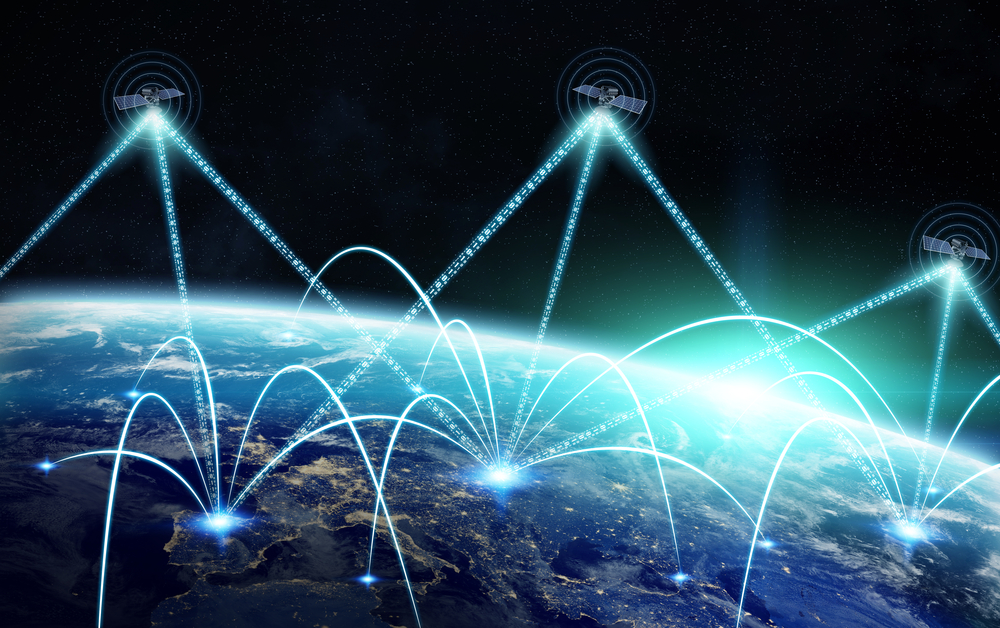Earlier this month, Access Intelligence convened its 40th annual SATELLITE conference at the Gaylord National Convention Center in National Harbor, MD. This year’s SATELLITE 2021 conference celebrated four decades of serving the satellite and space communities, and broadened the scope of content to encompass professionals in markets benefiting from satellite technology and applications, such as government, military, aviation, and maritime, to name a few.
On Wednesday, September 8, SATELLITE held “The Future of Global Satellite Connectivity” general session, where SATELLITE 2021 Chair, Jeffrey Hill, moderated a panel discussion that included:
- Steve Collar, CEO of SES
- Jonathan Hofeller, Vice President of Starlink Commercial Sales
- Brian Barritt, Leader at Connectivity @ Facebook
- Kevin Steen, CEO of ST Engineering iDirect
Global connectivity is an increasingly important topic for government and military organizations today. As digital transformation initiatives and network-enabled platforms and systems continue to make their way into government organizations, the need for connectivity at the edge becomes more mission-critical. Afterall, government employees in the field and military personnel at the tactical edge can only access network-enabled and software-enabled systems if they have connectivity.
But it’s not just about connecting government employees and military personnel.
As government becomes increasingly online and digital, constituents also need connectivity if they’re going to be able to effectively and efficiently access government information, and citizen services. And organizations like schools, hospitals, and other government organizations will only suffer from an increasing digital divide if they can’t access next-generation digital tools and services.
But, in 2021, is connectivity really an issue? Unfortunately, the panel’s answer was overwhelmingly, “yes.”
“There’s still over 3.5 billion people on earth that lack internet access,” said Barritt. “And the problem of connecting the unconnected is one that’s highly related to population density around the world.”
That population density problem that Barritt referenced is simply one of economics for terrestrial network providers. It simply doesn’t make financial sense for terrestrial network providers to invest in extending their networks to places like rural America, geographically-isolated locations, and areas with small populations because they may never see a return on that advancement.
But that’s one area where satellite can be a solution.
According to Barritt, for population dense areas that have the best economic development, fiber will take the lead in building out connectivity. But he also pointed out that terrestrial networks alone will not enable ubiquitous connectivity on a global level. Satellites will inevitably be the bridge that ushers in connectivity to every part of the world.
“You can’t solve the problem, especially in rural areas, without satellite connectivity,” said Barritt. “It’s an absolutely vital piece of the connected ecosystem.”
And that’s a problem that the panelists representing commercial satellite providers were more than eager to tackle.
When asked to explain the mission of SES, Collar answered that the company’s purpose – as well as his personal purpose – is to do the extraordinary in space to deliver experiences on the ground. Collar explained that the “extraordinary” aspect speaks to how hard it is to conquer the incredibly difficult space environment that SES satellites are launched into, while delivery pertains to the broadcast and network side of the satellite connectivity business.
When the extraordinary meets delivery, combined with satellite capability that extends reach and connectivity to the edge, Collar said that it is possible to deliver the most “amazing experiences ever on Earth.”
Steen expressed that there is a sense of fulfillment that comes with providing connectivity to schools, disaster relief teams, and government defenses around the world. According to Steen, this sense of fulfillment completely aligns with ST Engineering iDirect’s overall purpose, which is “supporting customers who reach those end users and support the enterprises.”
This sentiment was echoed by Collar, who referred to satellite as, “…a sort of a terrestrial alternative in the parts of the world where…terrestrial doesn’t exist yet.”
And while satellite has the potential to deliver the connectivity necessary to bring digital services to governments – and their constituents –in even the most remote or isolated of geographies, there is still one major problem; who pays for it?
Hill closed the session by asking the panelists about their views on whether satellite technology should be subsidized, as well as what steps they would like to see from the federal government.
According to Collar, there is an expressed interest in subsidizing satellite technology from governments around the world. He explained that, for the most part, government investments in space would fall into one of three buckets: rural inclusion, the strategic importance of space for defense, and the space economy.
Regardless of who pays for the delivery of connectivity via satellite, there’s no argument that the need for ubiquitous connectivity is already immense, and only growing.
“One thing that doesn’t really get questioned is whether the need for broadband and the need for connectivity is going to continue to grow,” Collar explained. “…is it going to continue to grow extremely quickly? I think the answer to that is yes.”
With digital transformation among the largest trend across all levels of government, it’s rather obvious to see why that need for broadband is increasing. If governments are going to continue to embrace digital solutions and network-enabled systems in their operations, connectivity becomes absolutely mission-critical. And as IT services and tools continue to reshape healthcare, education, and other essential services, a lack of connectivity will only create a dangerous digital divide.
This panel discussion made it abundantly clear that satellite can offer a solution, but governments may need to be willing to invest to make that a reality.
